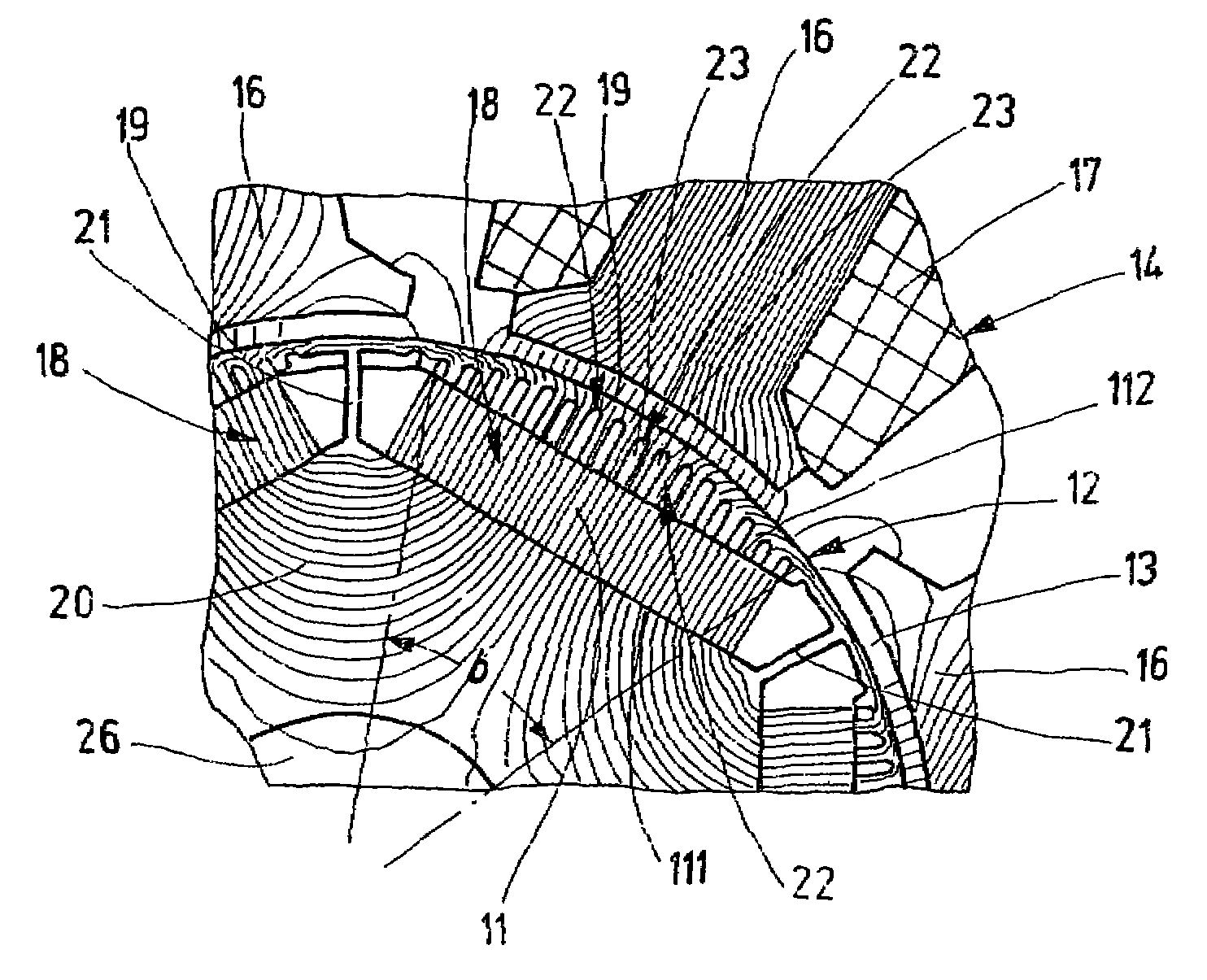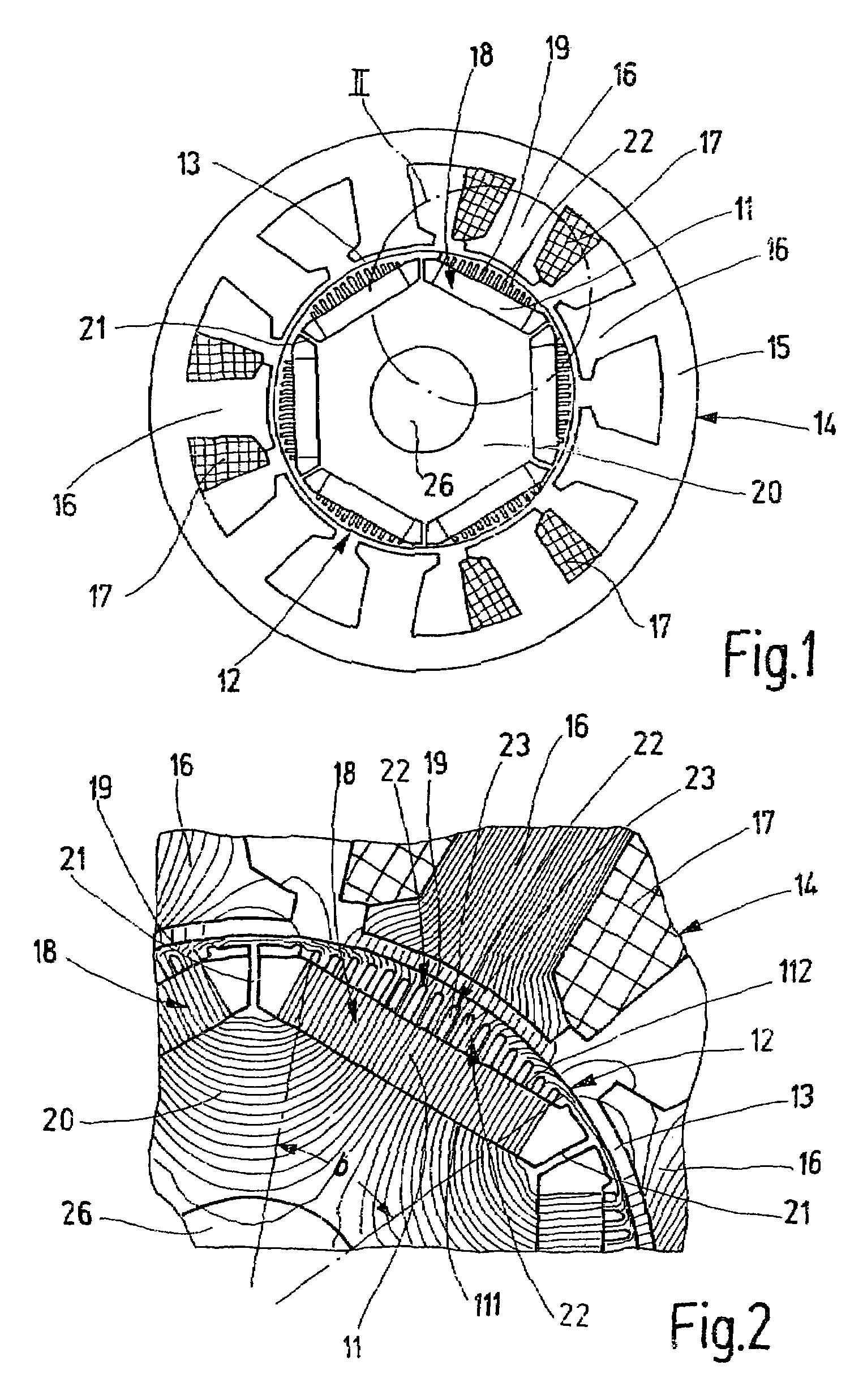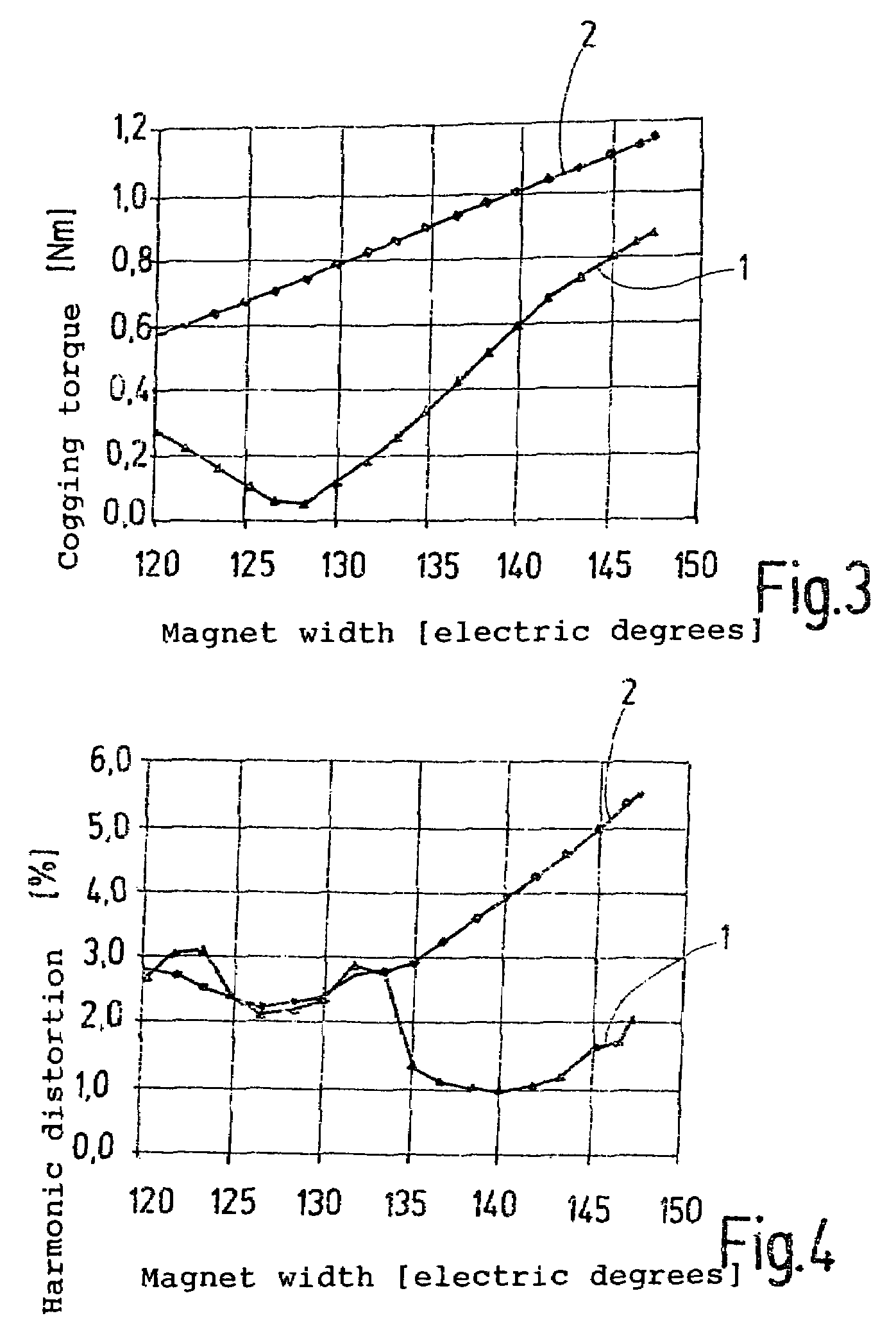Electric machine, in particular brushless synchronous motor
a brushless synchronous motor and electric machine technology, applied in the direction of dynamo-electric machines, magnetic circuit rotating parts, magnetic circuit shape/form/construction, etc., can solve the problem of high production cost, and achieve the effect of reducing cogging torque and reducing the degree of torque undulation
- Summary
- Abstract
- Description
- Claims
- Application Information
AI Technical Summary
Benefits of technology
Problems solved by technology
Method used
Image
Examples
Embodiment Construction
[0014]The brushless synchronous motor, a cross section of which is schematically depicted in FIG. 1 as an exemplary embodiment of a generic electrical machine, is embodied as an internal rotor motor and has a rotor 12 equipped with permanent magnets 11 and a stator 14 that concentrically encompasses the rotor 12 to form a working air gap 13. The stator 14 is comprised of a yoke ring 15 and a multitude of stator teeth 16, which protrude radially inward from the yoke ring 15 and are disposed equidistantly from one another in the circumference direction. Each stator tooth 16 has an annular coil 17 wound onto it; FIG. 1 depicts the annular coils 17 of only one phase or winding of the stator winding. In the exemplary embodiment in FIG. 1, the stator winding is embodied as a three-phase or three-winding stator, with three annular coils 17 connected in series or in parallel. There are therefore nine stator teeth 16.
[0015]The rotor of the for example six-pole synchronous motor has six salie...
PUM
 Login to View More
Login to View More Abstract
Description
Claims
Application Information
 Login to View More
Login to View More - R&D
- Intellectual Property
- Life Sciences
- Materials
- Tech Scout
- Unparalleled Data Quality
- Higher Quality Content
- 60% Fewer Hallucinations
Browse by: Latest US Patents, China's latest patents, Technical Efficacy Thesaurus, Application Domain, Technology Topic, Popular Technical Reports.
© 2025 PatSnap. All rights reserved.Legal|Privacy policy|Modern Slavery Act Transparency Statement|Sitemap|About US| Contact US: help@patsnap.com



